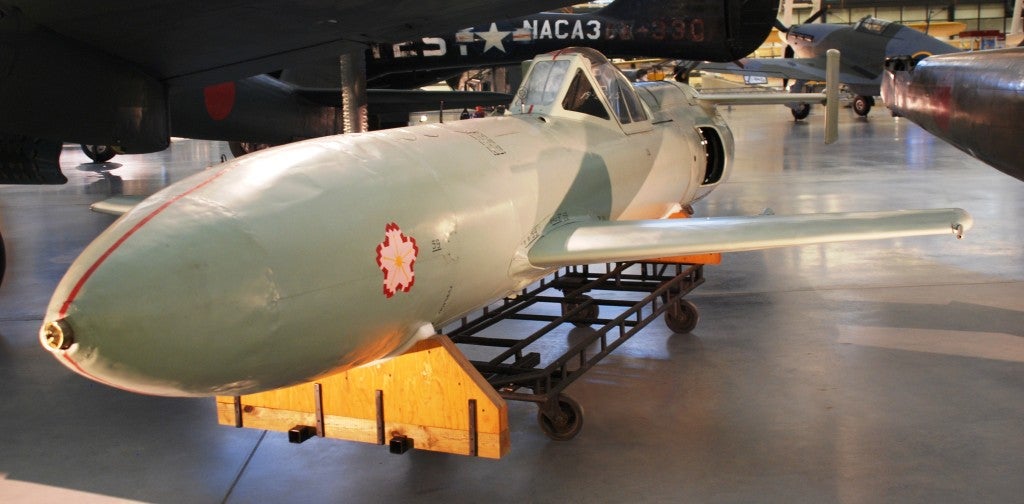

World War II finally ended on Sep. 2, 1945 when the U.S. accepted the unconditional surrender of Japan. The debates around the use of the Atom bomb against Hiroshima and Nagasaki as a means to end the war quickly continue at institutions of higher learning to this day, but most military scholars allow that an invasion of Japan would have cost both sides hundreds of thousands or even millions of lives.
Japan still had nearly seven million men under arms at the time of surrender and had a number of secret weapons at their disposal. While the Allies had learned of a few, like the Kaiten suicide torpedo, weapons like the I-400 submersible aircraft carriers weren’t discovered until after the war was over.
Here are 7 weapons that would have greeted Allied troops on the beaches:
1. The suicide torpedo, the Kaiten

Kaiten were 15-yard long torpedoes packed with over 3,000 pounds of explosives that were piloted by humans through the ocean to an Allied ship. They had trouble in the open Pacific as an offensive weapon but would have been easier to target when fired from a shore position in calm seas at approaching landing craft.
READ MORE: This torpedo was WWII Japan’s other Kamikaze weapon
2. Ohka

Another suicide weapon, the Ohka was basically a missile piloted by a human. Again, while bombers had trouble getting them into positions offensively, they would likely have proven more successful against an invasion fleet approaching the main islands.
3. Submersible aircraft carriers

While Japan had planned to pull its massive I-400 submersible aircraft carriers back to defend the main islands, it’s not clear what role they would have played.
They launched three kamikaze bombers each, but their main strength was in approaching stealthily and attacking while the enemy were off guard. A U.S. fleet approaching the Japanese home islands would have been on high alert.
4. Suicide divers

Late in the war, Japan developed a plan for divers to hide in the surf for up to 6 hours. They carried 16-foot bamboo poles with 33 pounds of explosives that they would thrust up at approaching landing craft and Navy ships.
5. Rocket-powered interceptors

Japan was developing and manufacturing a number of rocket-powered aircraft to intercept American bombers at the end of the war, all based on the German Komet.
A few airframes were tested and Japan had a plan to build thousands but surrendered before any Japanese rocket-powered aircraft, besides the Ohka, saw combat.
6. Bioweapons

Japan had an advanced biological weapons program in World War II that cultivated diseases from the plague to anthrax. They successfully deployed the weapons against Chinese towns in tests.
In case of an American invasion, the Japanese weren’t only capable of using the weaponized diseases in tests but also as an offensive weapon against San Diego.
7. Experimental rockets
Though Japan was behind the other major powers in creating rocket weapons, by the end of the war they had working designs. The most common was a 20cm rocket.
While the Japanese designs were inaccurate, they carried large warheads. The largest had over 900 pounds of explosives and could have easily broken up troop formations storming a beach.
